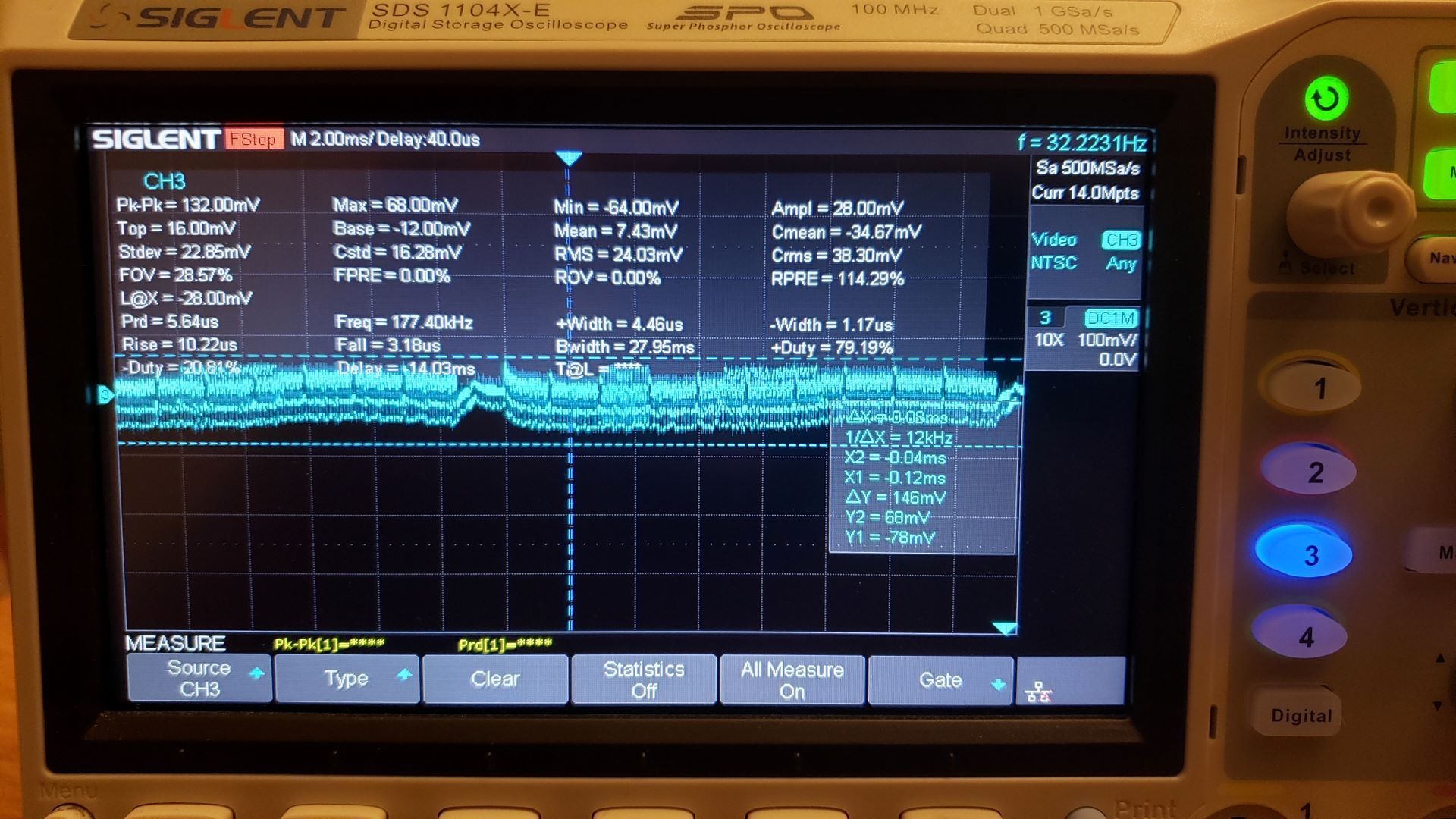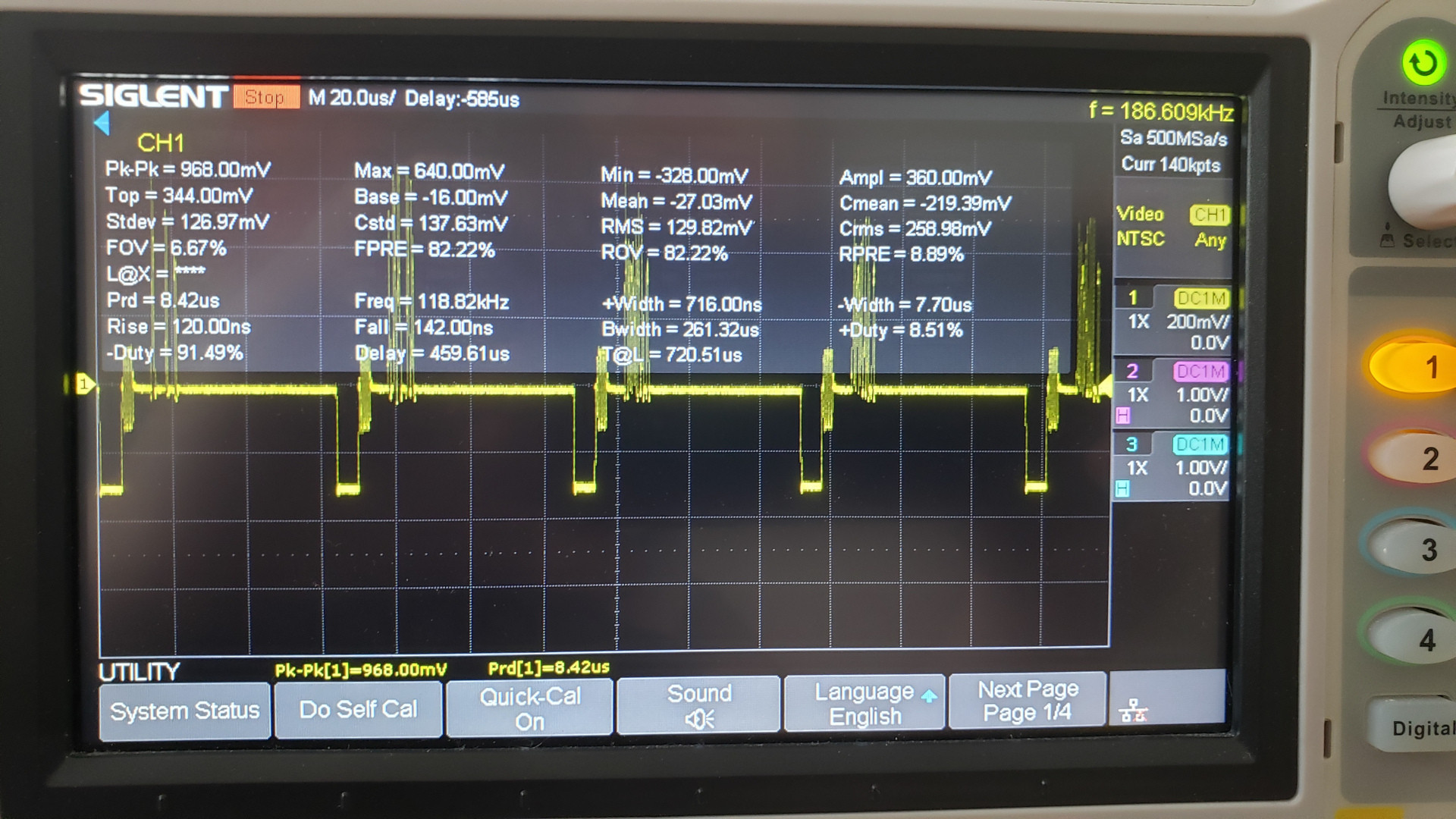I am currently trying to learn more about video signals. I'm particularly interested in NTSC since I live in North America.
I recently bought an oscilloscope (Siglent SDS1104X-E) and I am trying to look at the composite NTSC signal output by a Playstation 1 (SCPH-101/PSone/NTSC-U/C).
Now I was happy to learn that my scope had a NTSC trigger built in, however I couldn't get it to trigger at all in this mode...
Anyway I forced a trigger and this is what I got:
From what I've read on NTSC the reference white should be 100 IRE (714mV) in amplitude and the sync level should be -40 IRE (-285.7mV) in amplitude so I don't understand how come my scope calculate a minimum amplitude of -12.80mV? Shouldn't it be around -285.7mV? Is the playstation generating a scaled down signal somehow?
Here's a picture when I zoom in on the signal:
To me this looks like 1 scanline worth of signal. So I think the signal looks fine except for the amplitude. I can clearly see the signal dropping to the sync level followed by the color burst.
What am I missing here? Why is the signal amplitude wrong? How can my TV even display this signal correctly?
Edit 1: New picture with probe and scope @10x
I have the playstation with the tray opened so it's most likely displaying the bios screen:
Edit 2:
I don't have an "optimal" way to connect the probe to the component signal I had some RCA ports laying around but no pcb to solder them on. So I connected the RCA cable into this port and connected the probe directly to the pins.
I tried connecting the probe directly to the end of the rca cable and I am getting a MUCH better signal, the NTSC trigger now works. However the amplitude seems too high. With sync level at about -1.14V, I also set the scope back to 1x otherwise I get -11.40V (that can't be right?)
Edit 3:
I am sorry it's been a while since I posted. I had another go at measuring NTSC signals recently but I bought some more equipment to do better testing. What I got was some RCA to BNC adapters and a 75 ohm plug-in BNC termination (as suggested in the answers). I set the probe setting to 1x on the scope and I got MUCH better amplitude readings.
Now to compare my new measurements to the standard:
I now have a peak to peak amplitude of 968 mV which is pretty close to the 1V p-p amplitude defined in the NTSC standard (~4.5 IRE difference but depends if the signal contain any luminance at peak white level). The sync level is slightly off, I get -328 mV and the standard should be -285.7 mV for a total of 42.3 mV difference or more or less 6 IRE. The color burst amplitude is also slightly off, I get about 116 mV and the standard is 142.86 for a difference of 26.86 mV or about 4 IRE. Does anybody know if this is an acceptable error margin or is there any way I can go about improving my measurements?










